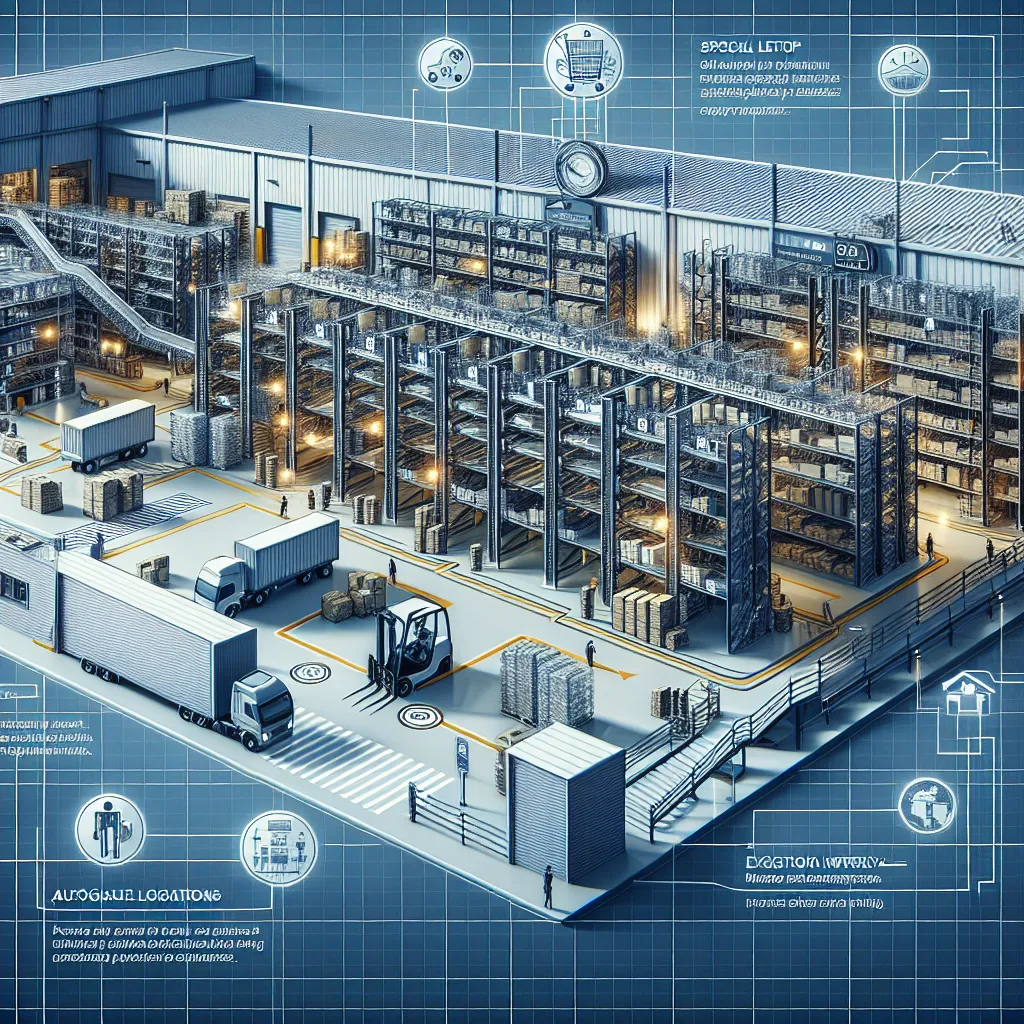The article “The Financial Benefits of Preventive Maintenance in Industrial Settings” emphasizes the crucial role of proactive maintenance in ensuring smooth operations and financial stability in industrial environments. It highlights how preventive maintenance not only enhances reliability and productivity but also leads to substantial cost savings by avoiding downtime, repairs, and replacements. Additionally, the article discusses how regular maintenance extends the lifespan of equipment, improves energy efficiency, and reduces operational costs, making it a smart investment for any industrial operation. Similarly, the piece “Reducing Downtime: The Key Role of Preventive Maintenance” stresses the significance of preventive maintenance in minimizing unexpected breakdowns and optimizing equipment performance, ultimately reducing the likelihood of unplanned downtime and production delays. It underscores the value of advanced technologies in enhancing preventive maintenance strategies. Overall, the articles effectively present a compelling case for the financial and operational benefits of implementing preventive maintenance in industrial settings.
Author: admin

Last-Mile Delivery: Balancing Speed and Environmental Responsibility
The article delves into the crucial role of sustainable last-mile delivery in urban environments, emphasizing the need to balance speed and environmental responsibility. It highlights the challenges of increasing traffic congestion, air pollution, and carbon emissions in cities, and emphasizes the importance of integrating sustainable practices, such as electric vehicles and optimized route planning, to minimize the environmental impact. The article also discusses the growing recognition among companies of the need to align with environmentally conscious consumer demands and corporate social responsibility goals. Furthermore, it explores strategies for optimizing last-mile delivery efficiency, including route optimization, adoption of alternative transportation modes, and the strategic placement of urban distribution centers. Overall, the article makes a compelling case for the vital role of sustainable last-mile delivery in creating greener and more livable cities and encourages readers to explore the comprehensive insights presented.

The Impact of Automation on Supply Chain Efficiency
The Role of Automation in Modern Supply Chain Management is crucial in driving efficiency and effectiveness. Automated technologies such as robotics and artificial intelligence optimize various aspects of the supply chain, enhancing accuracy, precision, and overall performance. Automation facilitates real-time visibility and transparency across the supply chain, enabling faster decision-making and risk mitigation to achieve a more agile and responsive supply chain. Additionally, automation optimizes labor utilization and workforce productivity, leading to enhanced overall efficiency and employee satisfaction. Embracing automation elevates supply chain efficiency, adaptability, and competitive edge in the dynamic global marketplace. Similarly, Automation’s Impact on Supply Chain Operations revolutionizes processes, inventory management, order fulfillment, transportation management, demand planning, and forecasting, ultimately maximizing efficiency across the supply chain. The integration of automation technologies brings substantial improvements in speed, accuracy, and cost-effectiveness, making it a necessity rather than a luxury in modern supply chain management.

Key Strategies for Effective Facility Maintenance Management
The article emphasizes the significance of preventive maintenance in facility management, highlighting its role in ensuring smooth operations, cost savings, and extended equipment lifespan. It emphasizes the importance of developing a comprehensive maintenance schedule, leveraging advanced technology such as CMMS and IoT devices for streamlined maintenance processes, and the shift from reactive to predictive maintenance. Importantly, it underlines the positive impact of incorporating preventive maintenance in enhancing reliability, sustainability, and productivity of facilities while achieving cost savings and improved overall operations. The subsequent section discusses the use of cutting-edge technology, including predictive maintenance tools and IoT devices, to achieve streamlined and proactive maintenance operations. It underscores the pivotal role of CMMS in comprehensive facility maintenance, the benefits of real-time monitoring and analysis of equipment performance through IoT devices, and the use of predictive maintenance tools to forecast equipment failures and prioritize maintenance tasks. Ultimately, the article provides a compelling case for the integration of preventive maintenance and advanced technology in facility management to achieve efficient, cost-effective, and sustainable maintenance practices.

5 Innovative Solutions for Sustainable Energy
The article “Revolutionizing Solar Power: The Latest Breakthroughs” highlights the cutting-edge developments in solar technology, presenting innovations such as perovskite solar cells, bifacial solar panels, solar tracking systems, and energy storage solutions. These advancements aim to enhance the efficiency, cost-effectiveness, and reliability of solar power, making it a more accessible and sustainable energy source for a broader range of consumers. The integration of innovative financing models and policy frameworks is also driving the widespread adoption of solar power. Additionally, the article “Harnessing the Power of Tidal Energy: Cutting-Edge Technologies” discusses the immense potential of tidal energy as a reliable and predictable source of renewable energy, showcasing the innovative technologies of tidal stream generators and tidal barrages, as well as the advancements in materials, design, and predictive modeling. Overall, both articles emphasize the promising prospects for a sustainable and renewable energy future, making them a compelling read for anyone interested in the latest advancements in sustainable energy solutions.

Optimizing Warehouse Management for Efficient Logistics Operations
The article “Implementing Automation in Warehouse Management” emphasizes the significance of incorporating automation technologies such as barcode scanning, RFID systems, and AS/RS to optimize warehouse operations. It highlights how these technologies enhance inventory accuracy, order fulfillment speed, and overall efficiency, leading to substantial cost savings in labor and operational expenses. Additionally, the implementation of automation enables companies to reallocate human resources to more value-added activities, ultimately gaining a competitive edge in the market. Furthermore, the article “Streamlining Inventory Tracking Systems for Improved Logistics” stresses the importance of advanced technologies like RFID, barcode scanning, and inventory management software in streamlining the tracking and managing of inventory for efficient logistics operations within a warehouse. These technologies provide real-time visibility and accuracy of inventory levels, reducing manual labor, minimizing errors, and offering insights to optimize overall efficiency and reduce carrying costs. The articles collectively present a compelling case for businesses to embrace automation and advanced technologies to elevate their warehouse management practices and achieve operational excellence.

The Future of Last-Mile Delivery Services
The article “Emerging Technologies Revolutionizing Last-Mile Delivery” highlights the transformative impact of innovations in last-mile delivery services, such as drone delivery, autonomous vehicles, and IoT-connected devices. The use of drones and autonomous vehicles promises unprecedented efficiency, speed, and cost-effectiveness in delivering packages, while reducing the environmental impact of traditional delivery methods. The integration of IoT technology enhances the transparency and efficiency of last-mile delivery, offering real-time package tracking and route optimization. The article underscores that these emerging technologies are revolutionizing the last leg of the supply chain, delivering unprecedented speed, efficiency, and reliability to the delivery process. Moreover, the article “Sustainability in Last-Mile Logistics: Challenges and Solutions” addresses the significant challenges faced by last-mile delivery services in achieving sustainability, emphasizing the environmental impact of traditional delivery vehicles and the need for efficient route utilization. It also presents promising solutions, such as alternative eco-friendly vehicles and advanced technologies for route optimization and delivery scheduling to mitigate the environmental impact and improve the long-term viability of last-mile delivery services.

How Automation is Revolutionizing Industries
The impact of automation on manufacturing and production has been transformative, revolutionizing the industry through increased efficiency, productivity, and quality. Integration of advanced technologies like robotics and artificial intelligence has streamlined production processes and reduced the margin of error, leading to cost savings and improved resource utilization. Automation has also enabled agile production planning and just-in-time inventory management, allowing for swift adaptation to changing consumer demands. While concerns about potential displacement of human workers exist, the need for skilled technicians and engineers to design, maintain, and oversee automated systems has created new employment opportunities. The article emphasizes the multifaceted impact of automation, highlighting both the advantages and workforce reshaping effects, while acknowledging the industry’s ongoing transformation.

Improving Efficiency in Last-Mile Delivery Logistics
The article delves into the significance of implementing technology solutions for last-mile delivery optimization, emphasizing the use of route optimization software and real-time tracking tools to improve efficiency and customer experience. Additionally, it highlights the emergence of automation technologies such as autonomous vehicles and drones for last-mile deliveries, underscoring their potential to reduce delivery times and labor costs. The second part of the article focuses on leveraging data analytics for enhanced last-mile logistics efficiency, outlining the benefits of data-driven insights in optimizing delivery routes, improving customer experience, and making informed decisions for a more efficient and cost-effective last-mile delivery operation. Lastly, it discusses the increasing importance of sustainable practices in last-mile delivery operations due to the rising environmental impact of e-commerce and online shopping, prompting companies to adopt eco-friendly measures. The comprehensive coverage of technological advancements, data analytics, and sustainable practices makes the article a compelling read for those interested in understanding the evolving landscape of last-mile delivery operations.

The Role of Tracking Technology in Modern Supply Chain Management
The evolution of tracking technology in supply chain management has revolutionized the industry’s operations, replacing manual processes with GPS, RFID, and IoT to provide real-time visibility. This technological advancement has enabled accurate tracking of shipments, automated inventory management, and extensive data collection for insights into product quality and integrity during transit. The impact of tracking technology on supply chains has led to improvements in transparency, streamlined processes, and leaner, more efficient operations, offering benefits such as improved inventory accuracy, optimized logistics routes, and enhanced customer satisfaction. The integration of tracking technology has significantly enhanced efficiency within supply chain management, making it essential for businesses seeking to meet the demands of modern commerce.

